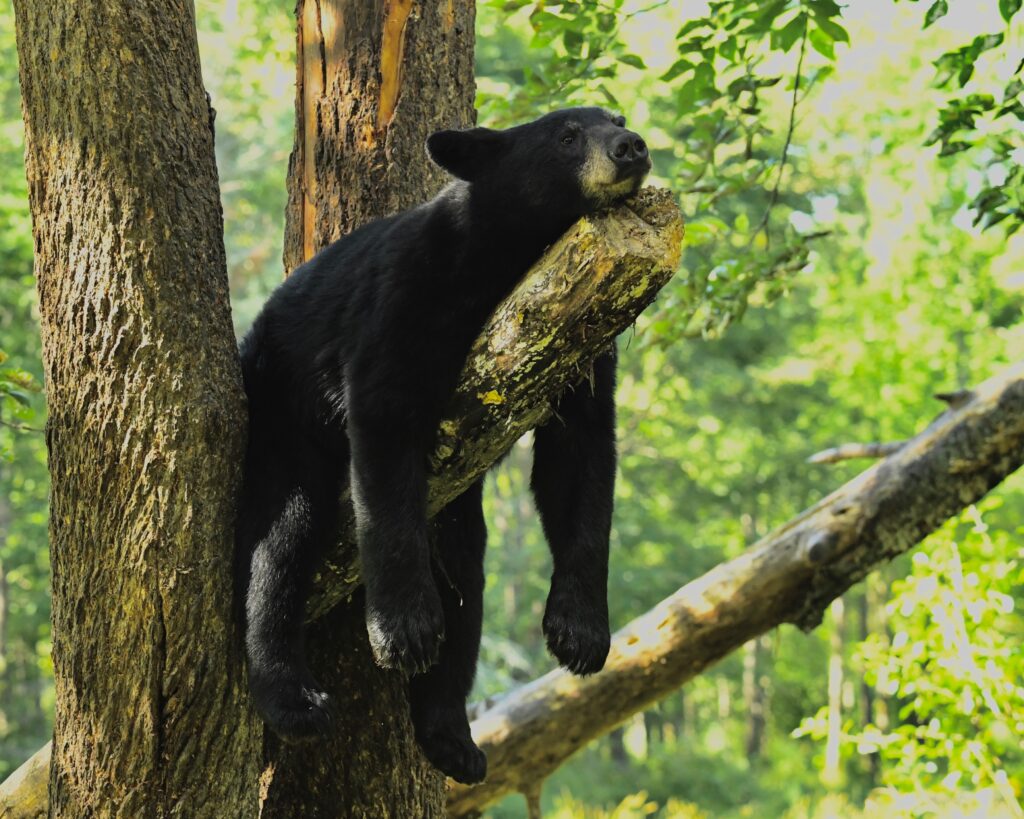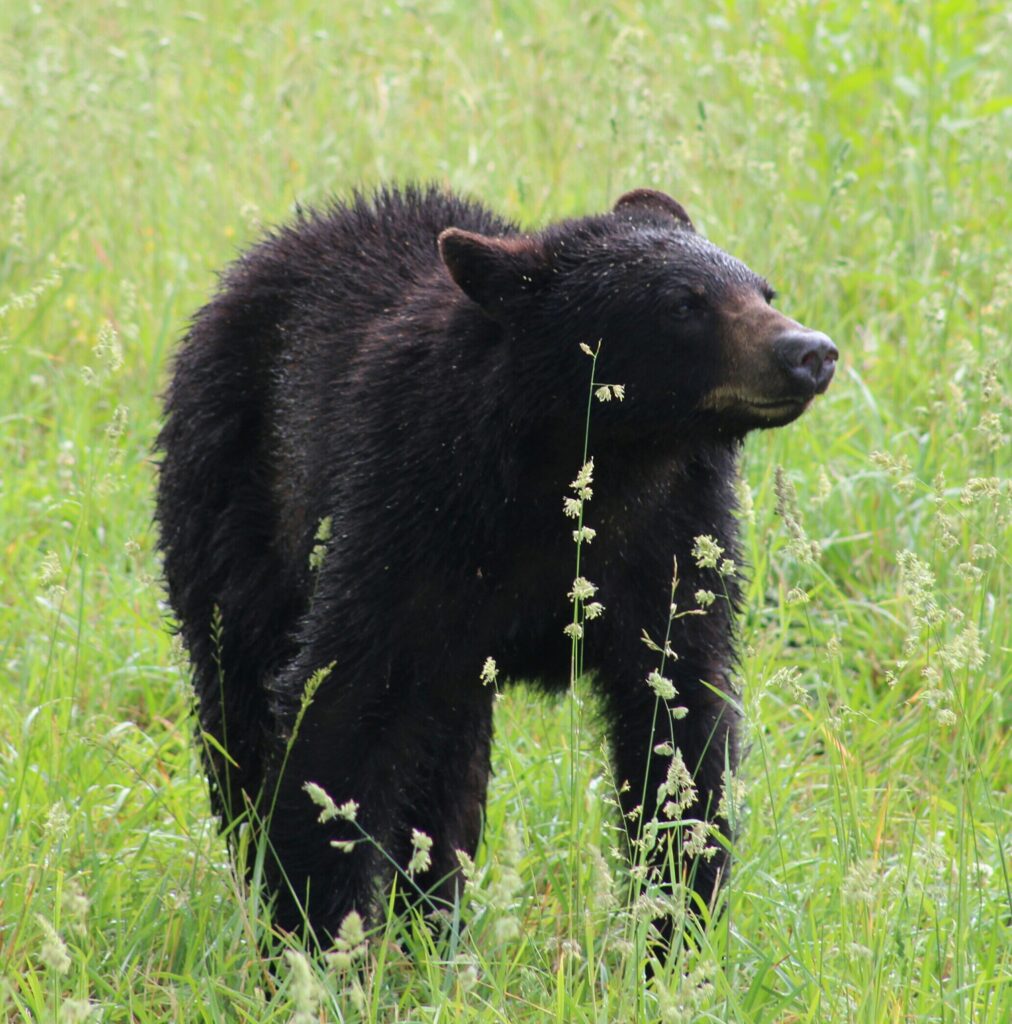Jul 24, 2021
Our Majestic Black Bears
One of the prominent tourist intrigues of the Great Smoky Mountains is our majestic black bears. It is not an uncommon sight to see a mama bear and her cubs playing in the park during spring, and it is a precious sight indeed. But don’t be fooled by the innocence of this fun-natured scene or the excitement of seeing your first bear because these creatures can be dangerous when threatened.
A typical adult male bear weighs approximately 250 pounds, and while the adult females are smaller, there have been females documented weighing over 100 pounds. The black bear’s weight can double in the fall, growing to 500+ pounds. They have a keen sense of smell, see in color, are good climbers and swimmers, and run up to 30 miles per hour.

What to Know About Black Bears
- Bears are most active early in the morning and late in the evening hours during spring and summer.
- Mating usually takes place in July.
- During the winter, they chose to den in hollow stumps high above the ground in the Smokies. They enter extended periods of sleep but will leave the den if disturbed or on unusually warm days.
- Cubs are born during the mother’s winter sleep around late January or early February.
- Females and newly born cubs begin to venture from their dens around late March and early April.
- Cubs are often born in pairs and will remail with their mother for about eighteen months.
- Bears are omnivores. Plants, nuts, and berries make up around 85% of their diets, and the remaining is protein gained from insects and animals.

Garbage Kills Bears
- When bears have constant exposure to human food, it changes their behaviors and causes them to lose their natural fear of humans. This exposure can lead to unpredictable and dangerous behavior.
- Bears unafraid to approach humans teach this behavior to other bears and become a threat to the public, which often leads to euthanasia.
- Bears who lack fear of humans have shorter life spans and become easy targets for poachers.
- When you visit the Great Smoky Mountains, be sure to use the provided bear-proof dumpsters and garbage cans. Never leave food scraps or containers unattended. If camping in the backcountry, hang your food and garbage on the provided food storage cable systems.
- If you bring it into the park, make sure you take it out with you.
- NEVER feed bears; that is a sure way to ensure their demise.

What To Do if You See a Bear
- Check the “Bear Closures” and “Bear Warnings” section of the Temporary Closures page before planning a hike in the park.
- Remain aware, do not approach the bear, or let the bear approach you.
- Approaching a bear within 50 yards (150 feet) or any distance that disturbs or distracts the bear is illegal in the park.
- If a bear gets aggressive (running toward you, making loud noises, or swatting at the ground), he demands more space.
- Throw rocks or non-food objects at the bear or use a large stick as a deterrent.
- Please DO NOT RUN, instead slowly back away, watching the bear, and shout to intimidate it. If it does attack – fight back with any available object; do not play dead.

The Great Smoky Mountains National Park is one of the largest protected areas in the eastern United States where black bears can live wild and free. Biologists estimate roughly 1500 bears live in the park and inhabit all elevations of the park. Their instinctive behavior is shy, elusive, and solitary by nature unless in family units. Our community mourns the euthanization of any single black bear, especially when it is because of behaviors created by careless humans. Please do your part to keep our majestic black bears safe and their habitats and instincts wild.

